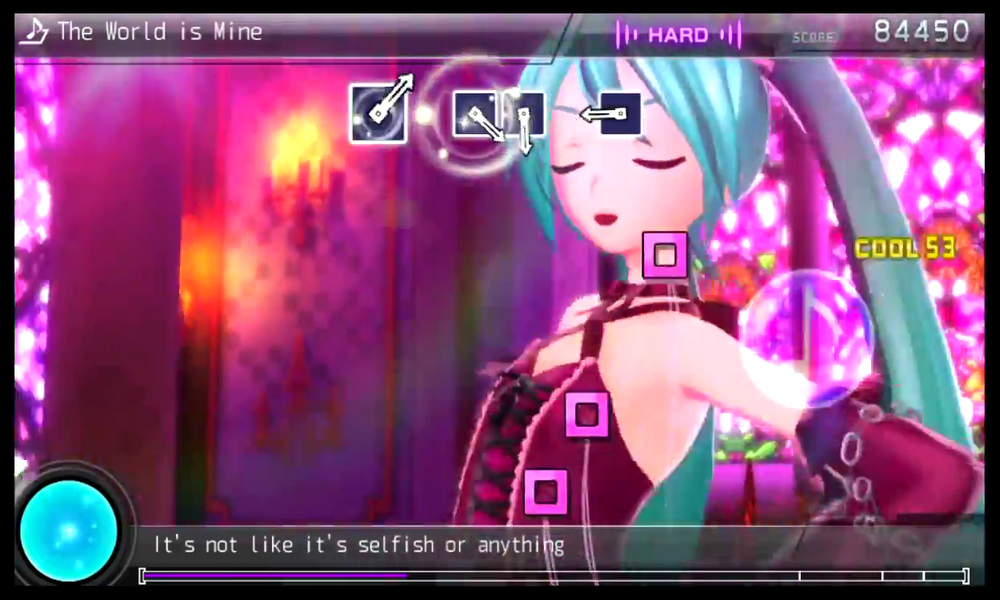

Notes fly in from all directions and speeds, causing you to constantly dart all over the screen to find your notes and try to not get distracted by the music videos constantly playing in the background. What makes Mega Mix different from all of the other rhythm games, including Project Mirai DX, is that it takes cues from Elite Beat Agents or Osu! in that the hit area takes up the entire screen rather than being relegated to one section of the screen. Most of the notes are activated with taps, but there are a few notes that need to be held and a few cases where more than one note needs to be tapped simultaneously. Symbols appear on-screen and move toward a destination point, and your job is to tap the corresponding button at the right moment to match the beat of the song. If you're unfamiliar with the series' game mechanics, it takes on the tried-and-true method of rhythm games. After what can be considered the pinnacle of the series thus far with Hatsune Miku: Project DIVA Future Tone, the blue-haired diva returns to the latest Nintendo system with Hatsune Miku: Project DIVA Mega Mix on the Switch. The lone exception to the sea of PlayStation titles is Hatsune Miku: Project Mirai DX, a Nintendo 3DS title that did a fantastic job of bringing the series to a portable audience. From the PSP to the PS4, Sega has brought rhythm games starring the vocaloid and her friends to an audience that has grown gradually with every new release. While it may have started as an arcade game, the Hatsune Miku series is largely thought of as a PlayStation-exclusive franchise.


 0 kommentar(er)
0 kommentar(er)
